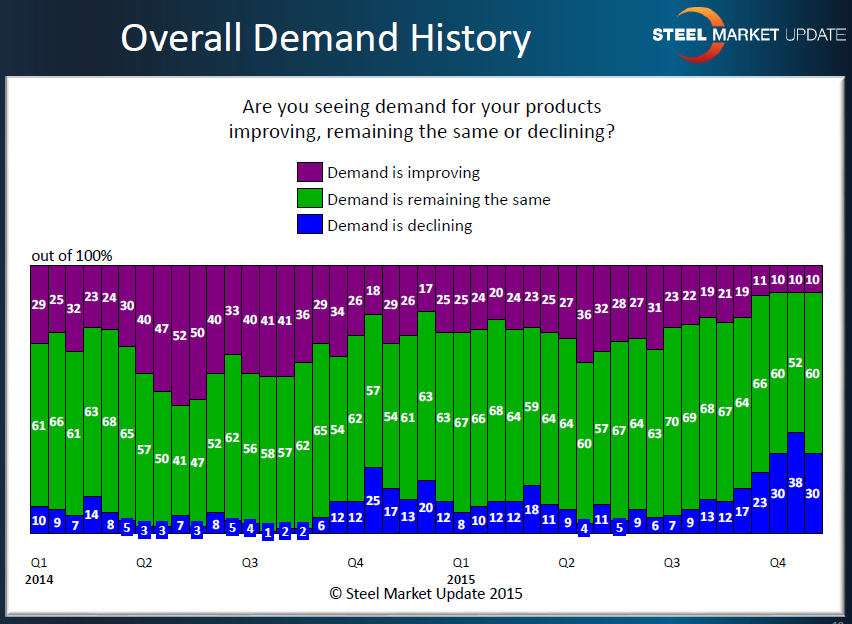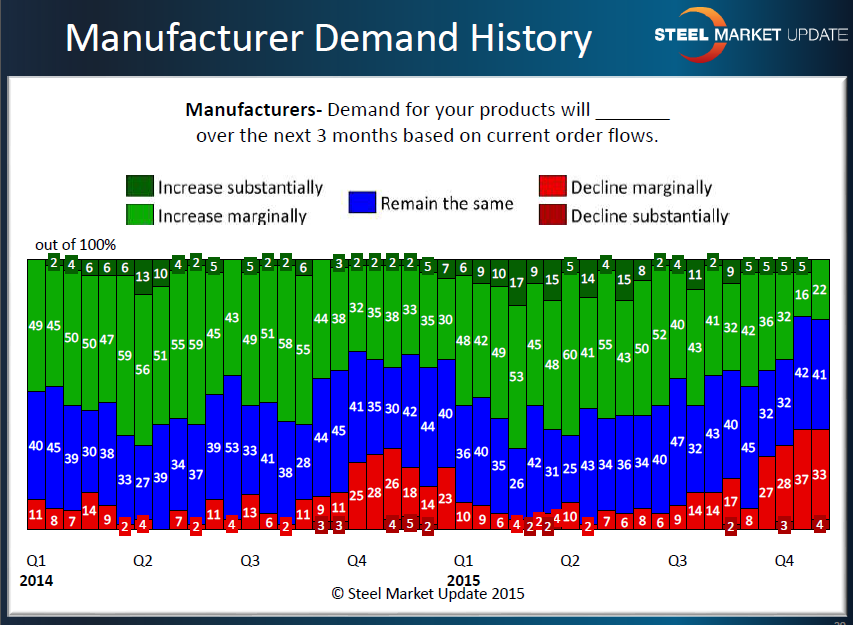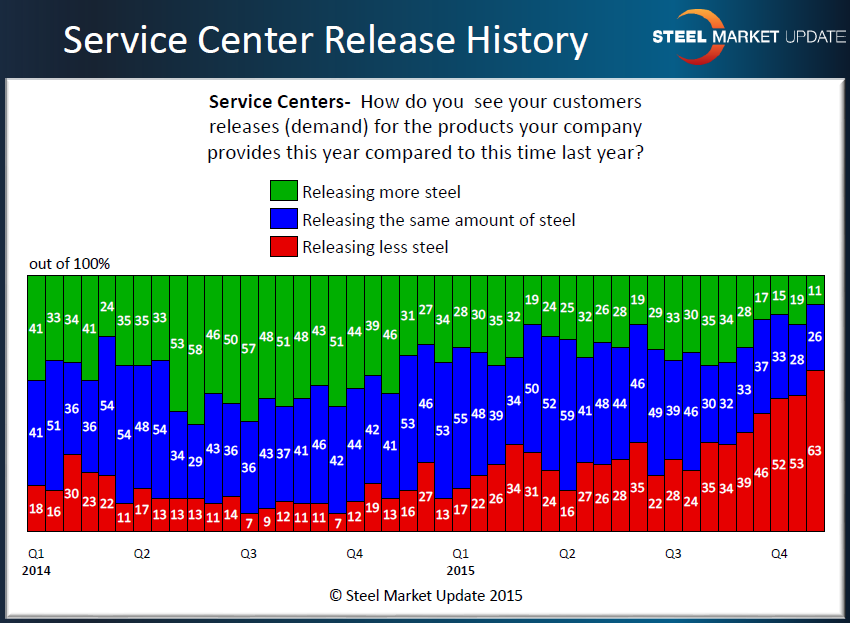SMU Data and Models

SMU Survey Respondents Report Slowing Demand
Written by John Packard
November 10, 2015
Last week Steel Market Update (SMU) conducted our early November flat rolled steel market analysis. During the two step process we asked our respondents to comment on demand trends, both as a group (step one) and then again when broken out into their various market segments (step two). We ask questions related to demand again so we can compare how various industry segments are seeing demand trends from their customers.
Step One:
All of our respondents are hit with the following question early in the market analysis process: Are you seeing demand for your products improving, remaining the same or declining?
As you can see by the graphic below, since mid third quarter our respondents as a group have been indicating a change in the demand trend, with approximately one third of the respondents reporting demand as declining vs. 10 percent reporting demand as improving.
Step Two:
We break out into groups and we ask each group to comment on demand (or releases of steel by their customers). Manufacturing and distribution are the two main market segments we look at to understand how the groups view demand.
Manufacturing companies have been signaling a slowdown. Optimism has begun to wane going back to early third quarter when we saw a shrinking percentage of companies advising that demand for their products was improving. By late third quarter, and now into fourth quarter, the percentage of those companies reporting demand as declining began to grow. Slightly more than one third of our manufacturing respondents (and this is the single largest group that participates in our market analysis) reported demand as either declining marginally (33%) or substantially (4%).
From the service center perspective you can see an even more dramatic view of the negative trend, expanding from the high 20’s at the beginning of the third quarter to last week’s 63 percent reporting their customers as releasing less steel.
Our Opinion:
In our opinion this reduction in demand is playing havoc with mill lead times, new orders and, ultimately, spot steel prices. Both the end users (manufacturing companies) and distributors are trying to control inventories (both spot and contract) which delays the re-order process.

John Packard
Read more from John PackardLatest in SMU Data and Models

SMU Survey: Buyers’ Sentiment rebounds from multi-year low
Both of SMU’s Steel Buyers’ Sentiment Indices edged higher this week. Current Sentiment rebounded from a near five-year low, while Future Sentiment rose to a two-month high

SMU flat-rolled market survey results now available
SMU’s latest steel buyers market survey results are now available on our website to all premium members.

SMU Survey: Sheet lead times pull back after early-June blip, plate holds
Following the uptick seen two weeks ago, lead times eased this week for all four sheet products tracked by SMU, while plate lead times held steady, according to this week’s market survey.

SMU Survey: Pricing power abruptly shifts to steel buyers
The majority of steel buyers responding to our latest market survey say domestic mills are more willing to talk price on sheet and plate products than they were earlier this month. Sheet negotiation rates rebounded across the board compared to early June, while our plate negotiation rate hit a full 100%.

Service centers: Mill orders down marginally in May
SMU’s Mill Order Index (MOI) declined for a third straight month in May, but only marginally.



